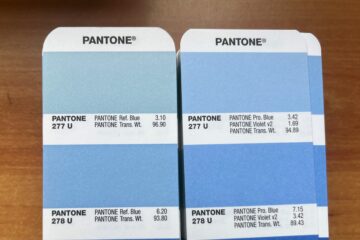If you’re looking to inspire trust from your audiences, could it be best to turn to print?
A wide-ranging new survey on people’s attitudes towards media shows that newspapers are the most trusted source of news and information, with social media lagging way behind.
So what does this mean for brands looking to build trust among customers and prospects? What actions can they incorporate into their marketing plans?
The ‘trust gap’
Kantar surveyed 8,002 people in eight countries including the UK. They found that 37% of people trust the news and information they learn from newspapers, against 12% who actively distrust them – a “trust gap” of +25 percentage points.
Radio earned the trust of 32%, with a trust gap of +22; TV was at 31%/ +17; and company websites at 26/ +11.
Social media was the only form to have a trust deficit. Just 17% trusted news and information gained from these platforms, with 33% stating active distrust – a trust gap of -16.
In terms of age groups, social media was more trusted by younger people than by their parents or grandparents’ generations. Newspapers, however, scored well across all age groups.
‘Fake news’
As the report pointed out, because of the sheer volume of information posted online, there is more chance of misinformation being posted and re-shared, giving it the ‘patina of truth’.
The report continues: “The lack of trust in certain media forms is an important consideration for brands and public organisations planning communication strategies.”
In other words: we’re waking up to the problem of ‘fake news’, and the role of social media in driving it. When putting together your marketing plan, this is certainly worth bearing in mind.
The Covid-19 effect
So how much do audiences trust news about the biggest media story of our time: the COVID-19 pandemic?
The Kantar study was published in May 2020 but based on fieldwork carried out before the lockdown. An Oxford University study, however, explored how people in six countries including the UK accessed information about Coronavirus during the early stages of the pandemic in late March and early April 2020.
It found that a third of people had seen a lot or great deal of false or misleading information about the virus on social media and in messaging applications in the previous week – far higher than for any other source.
The survey’s authors point out that there is an “infodemic” of news and information around Covid-19, a lot of which is hard to separate clearly into reliable and unreliable. Much of the public sees news in shades of grey, rather than black and white – making trust in the source of the information particularly important.
As the authors say: “Often, subjective and intersubjective factors like trust in source matter as least as much for how the public gets informed about risk as harder to establish factors like reliability and veracity.”
Building trust in your ads
When it comes to building brand trust through ads, print also scores highly.
Magazines and newspapers are the most trusted channels for advertising, winning the approval of 82% of respondents in one MarketingSherpa survey. Comparatively, social media ads gained the trust of just 43%.
Print ads are also read more and recalled more easily than digital ads, making them a strong contender for inclusion in your marketing plan, especially if you’re trying to build a trusted, long-term connection with your audience.
To put these print insights into practice, you could consider print as the cornerstone of your content marketing campaigns. Stories about your corporate social responsibility initiatives or your new CEO, for example, will carry much more weight and authority in trusted industry print publications.
A place for print
While marketers are keen to utilise social media for reasons of cost and speed, among other factors, they need to take into account this perceived lack of trustworthiness.
There is still appetite for reputable, quality news and information, with print newspapers and magazines holding their own in these increasingly digital times.
So the next time your colleagues talk about a ‘digital-first’ strategy, you should remind them why print still has its place.

